
Lot 1
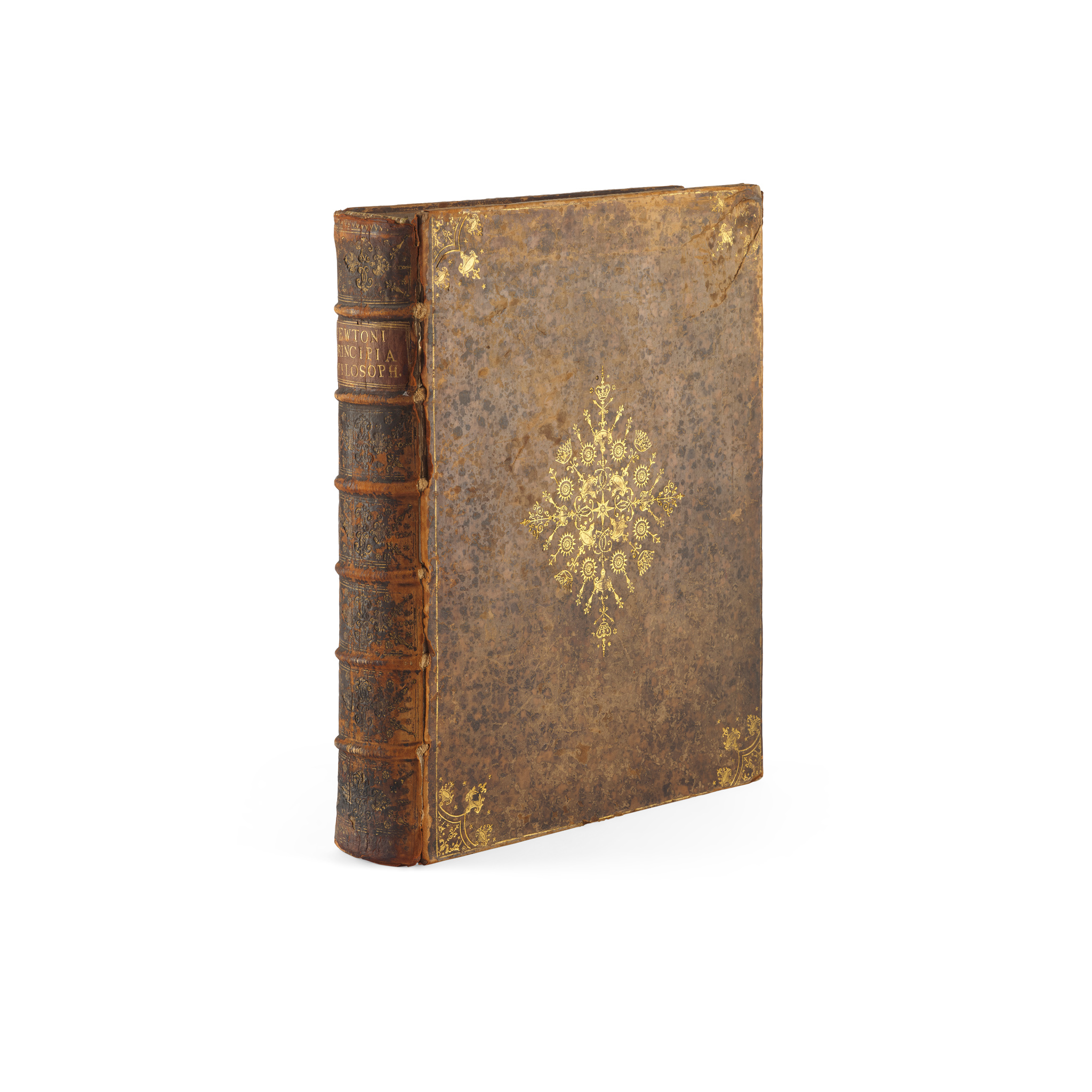
Newton, Sir Isaac
Philosophiae naturalis principia mathematica
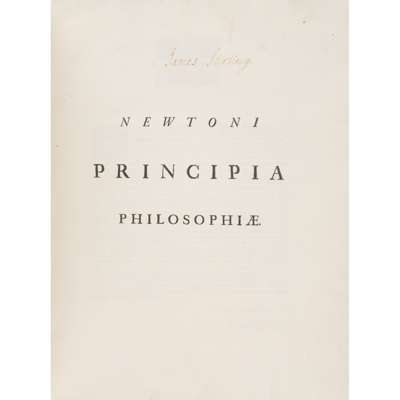
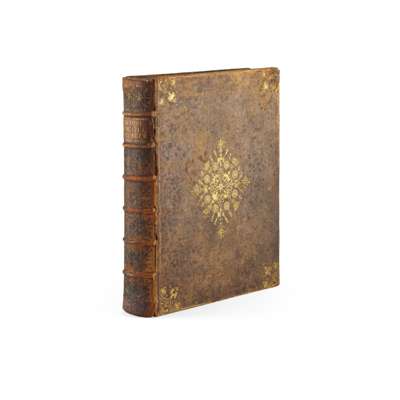
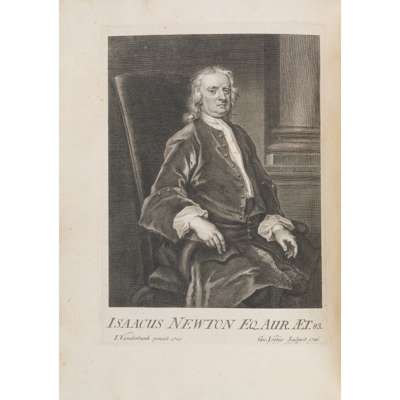
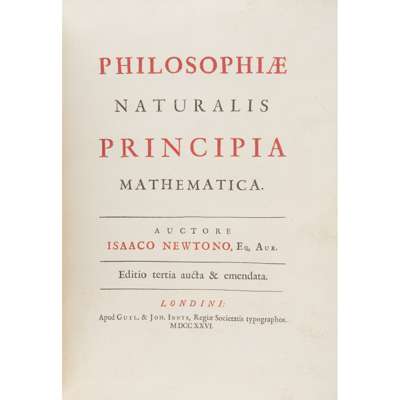


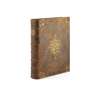
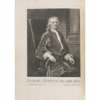
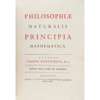
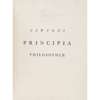
The Library of James Stirling, Mathematician
Auction: 23 October 2025 from 13:00 BST
Description
Editio tertia aucta et emendata. London: apud Guil. et Joh. Innys, Regiae Societatis typographos, 1726. 4to (28.7 x 21.5cm), contemporary mottled calf, spine gilt in compartments, red morocco label to second, covers with large diamond-shaped gilt centrepieces built up from various tools including crowns, sunbursts, flowers and drawer-handles, gilt cornerpieces, edges sprinkled red, [10] 530 [10] pp., half-title, royal licence leaf, engraved portrait frontispiece, title-page printed in red and black, advertisement leaf to rear, engraving by John Senex in text at p. 506, manuscript additions to diagram on p. 240, binding rubbed, front joint cracked, cracking to head and foot of rear joint, wear to tips, Z2 with loss to fore corner [Wallis 9; cf. Babson 13-14]
Footnote
Third edition, one of 200 large-paper copies, this copy with James Stirling's ownership inscription to the half-title. ‘This edition was the last published during the author’s lifetime and the basis of all subsequent editions. It was edited by Henry Pemberton … and contains a new preface by Newton and a large number of alterations, the most important being the scholium on fluxions, in which Leibnitz had been mentioned by name’ (Babson).
The first edition appeared in 1687, and the second edition (prepared by Roger Cotes) in 1713. The third edition comprised 1,000 standard copies on demy, 200 large-paper copies on crown, and 50 extra-large copies on superfine, respectively having the appearance of a quarto, large quarto, and folio.
James Stirling was a follower of Newton from his time at Oxford, where he arrived in 1710. In 1715 John Keill noted in a letter to Newton that the problem of orthogonal trajectories proposed by Leibniz had recently been solved by ‘Mr. Stirling an under-graduate here’ (Tweedie, James Stirling: A Sketch of his Life and Works along with his Scientific Correspondence, 1922, p. 7). Stirling's first book, Lineae tertii ordinis Neutonianae, a commentary on Newton's classification of cubic curves, was printed at the Sheldonian Theatre in April 1717, with Newton listed as a subscriber. By that time Stirling's status as a non-juring student and his alleged involvement in Jacobite agitation had already led to trouble with the university authorities, however, and his scholarships appear to have been withdrawn shortly before the book was published. Leaving Oxford without a degree, he took up an invitation to Venice from Nicolas Tron, Venetian ambassador to London. In 1719, while still in Italy and apparently in dire straits, he received much-needed financial assistance from Newton, and once back in London called on him regularly during his final years, writing in a surviving letter from 1725: ‘Sr Isaac Newton lives a little way of in the country. I go frequently to see him, and find him extremely kind and serviceable in every thing I desire, but he is much failed and not able to do as he has done’ (Tweedie, p. 13). Stirling's principal work, the Methodus differentialis, a response to Newton's paper of the same name, appeared in 1730.









